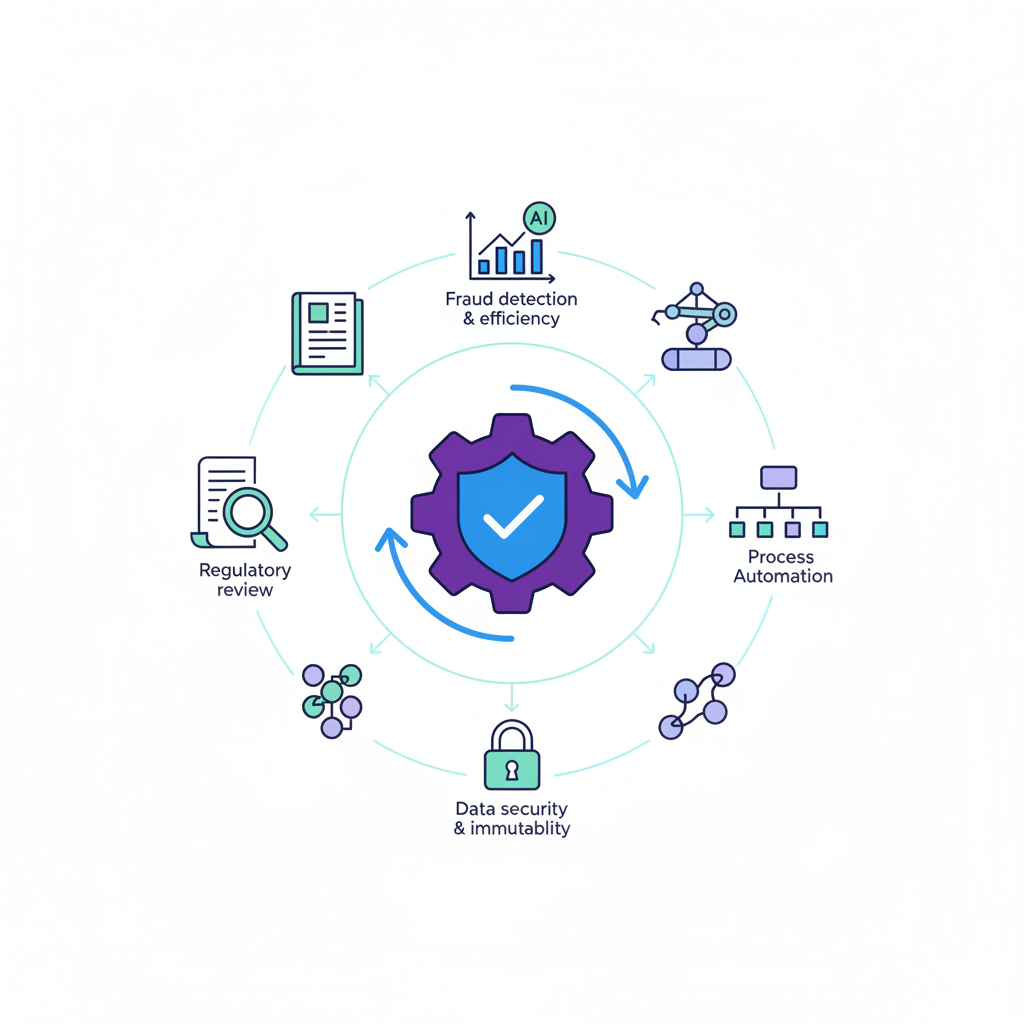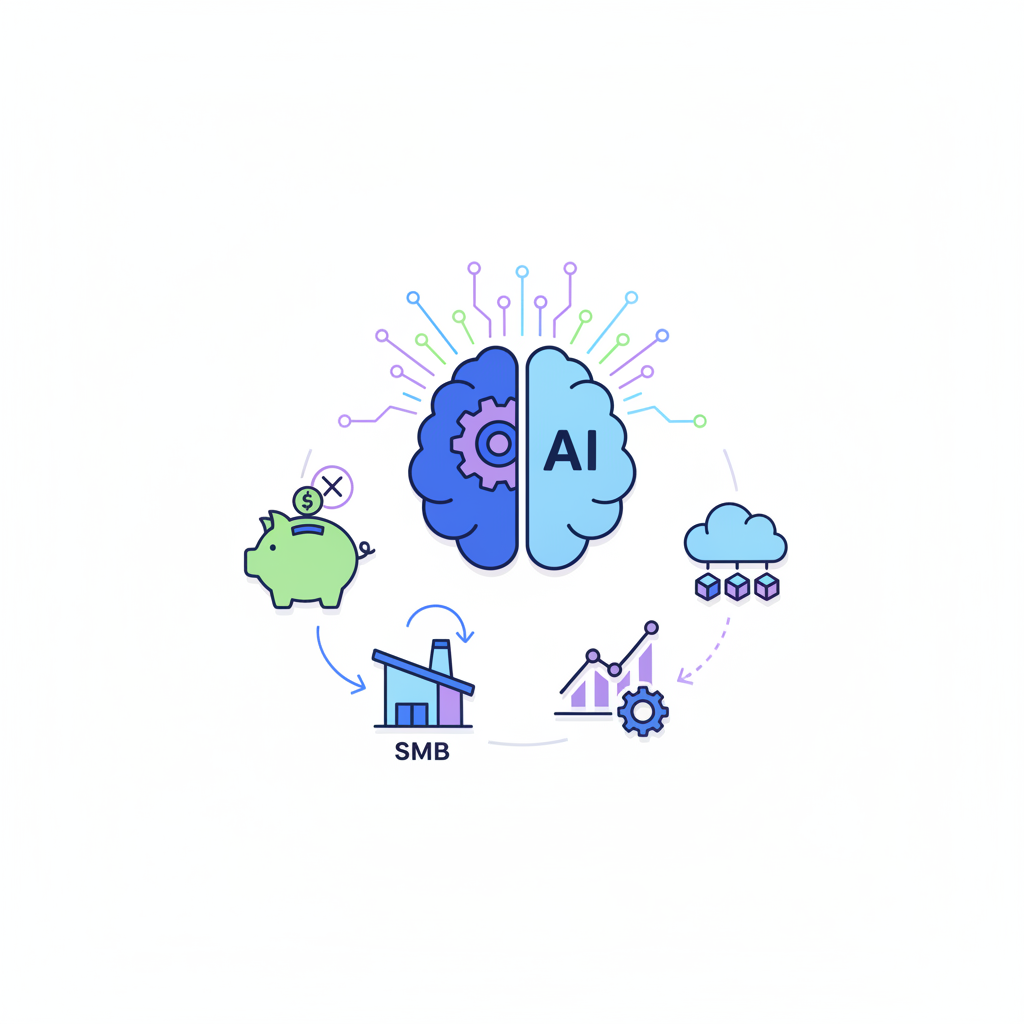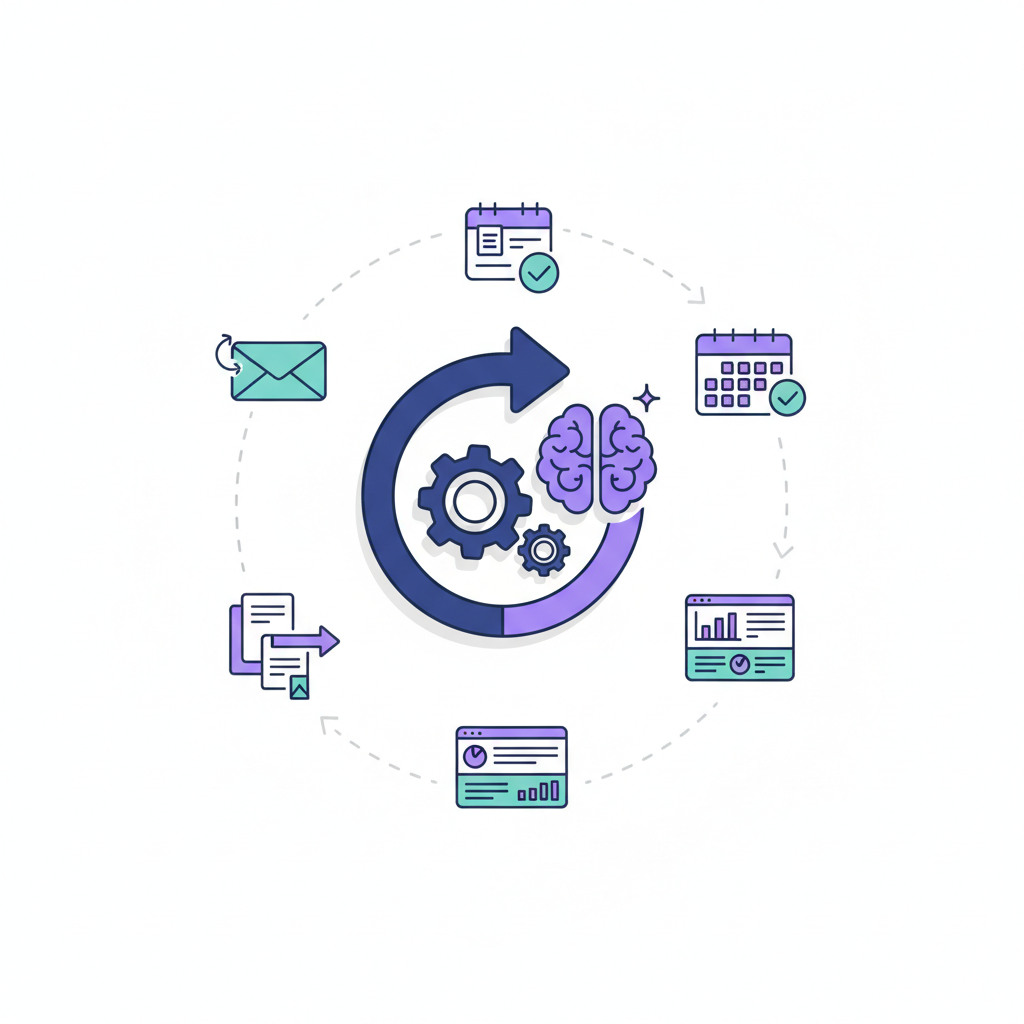The AI Horizon: What to Expect by 2026
The world stands on the precipice of an unprecedented technological revolution, driven by the relentless acceleration of artificial intelligence. What once seemed like science fiction is rapidly becoming our daily reality, with AI innovation progressing at a breathtaking pace. From sophisticated algorithms powering our search engines to generative models creating art and code, AI's current state is a testament to rapid advancements. As we hurtle towards 2026, the landscape of artificial intelligence is poised for even more profound transformations, promising to reshape industries, redefine human-computer interaction, and challenge our understanding of intelligence itself. This article will delve into the Top AI predictions for 2026, offering a comprehensive look at the future of AI across technology, industry, ethics, and society. We will explore the most significant AI trends 2026 and what these developments mean for businesses, individuals, and the global community, providing a detailed forecast of artificial intelligence 2026.
1. The Evolution of Generative AI: Smarter, Safer, and More Integrated
By 2026, Generative AI will have transcended its initial novelty, evolving into a sophisticated, indispensable tool across countless domains. We anticipate a significant leap in the capabilities of Generative AI 2026, moving beyond simple content creation to more complex, multi-modal applications. A key development will be the emergence of highly advanced AI agents 2026 predictions that are not merely conversational but truly agentic. These agentic chatbots 2026 will be context-aware, capable of understanding nuanced instructions, performing multi-step tasks autonomously, and even initiating actions across different platforms. Imagine an AI agent that can plan a complex trip, book flights and hotels, manage your calendar, and even draft personalized itineraries, all with minimal human oversight. This represents a significant shift in AI in customer service, making interactions far more efficient and personalized.
Another area of explosive growth will be Generative video 2026 and other multimedia. The quality and realism of AI-generated video, audio, and images will reach unprecedented levels, making it increasingly difficult to distinguish between real and synthetic content. This will open new avenues for creative industries, entertainment, and marketing, but also amplify concerns around deepfakes and misinformation. Addressing these challenges, Privacy-focused GenAI 2026 will become a critical trend. New architectural designs and federated learning techniques will allow generative models to be trained and deployed with enhanced data security and privacy, often leveraging synthetic data AI to protect sensitive information while still enabling robust model development.
The economic implications of Generative AI will also mature significantly. Companies will find innovative ways of monetizing generative search 2026, integrating AI-powered content generation directly into search experiences, offering personalized results and summaries. This will lead to the development of entirely new business models AI built around AI-as-a-service, custom generative solutions, and AI-powered content platforms. However, this rapid expansion will intensify debates surrounding copyright AI and intellectual property. The legal frameworks for ownership and attribution of AI-generated content will continue to evolve, with landmark cases shaping future policies and potentially leading to new licensing models. These Generative AI trends in 2026 highlight a future where AI is not just a tool, but an active participant in creation and commerce.
2. AI's Broadening Impact Across Industries: Beyond Enterprise Software
The pervasive influence of AI will extend far beyond traditional enterprise software by 2026, fundamentally reshaping a diverse array of industries. The AI impact will be felt profoundly in sectors previously considered less susceptible to automation, unlocking immense AI opportunities. In healthcare and medicine, AI technology will drive predictive diagnostics, enabling earlier detection of diseases through advanced image analysis and genomic sequencing. Personalized treatment plans, tailored to an individual's genetic makeup and lifestyle, will become more common, while AI will significantly accelerate drug discovery by simulating molecular interactions and identifying promising compounds. Surgical robotics, enhanced with AI, will offer greater precision and minimally invasive procedures.
Education and learning will undergo a radical transformation. Adaptive learning platforms, powered by AI, will personalize curricula for each student, adjusting content difficulty and pace based on individual progress and learning styles. AI tutors will provide instant feedback and support, making education more accessible and effective. This shift will redefine the role of educators and the learning experience itself.
Crucially, AI for climate change and sustainability will emerge as a vital application. AI-driven solutions will enhance climate modeling, providing more accurate predictions for weather patterns and environmental changes. It will optimize renewable energy grids, managing supply and demand more efficiently, and improve resource management in agriculture and urban planning, leading to more sustainable practices.
AI in scientific research will accelerate breakthroughs across disciplines. In material science, AI will discover novel materials with desired properties. In biology, it will decipher complex genetic interactions and protein structures. In physics, AI will analyze vast datasets from experiments, leading to new theoretical insights. This will significantly shorten research cycles and expand the frontiers of human knowledge, truly showcasing the future of AI in 2026.
Even the creative arts and entertainment will see a new era. Beyond generative art, AI will enable new forms of interactive experiences, personalized storytelling, and dynamic content creation. Generative AI in gaming 2026 will allow for procedurally generated worlds, intelligent NPCs with adaptive behaviors, and personalized game narratives, making every player's experience unique. These diverse applications underscore the widespread and transformative potential of AI impact across the global economy.
3. The AI Infrastructure and Investment Landscape: Powering the Future
The relentless advancement of AI is fundamentally dependent on a robust and evolving infrastructure, and by 2026, this landscape will have undergone significant transformations. The AI forecast points to continued rapid evolution in AI hardware and infrastructure. Specialized AI chips, such as Application-Specific Integrated Circuits (ASICs) and Neural Processing Units (NPUs), will become even more prevalent, offering unparalleled efficiency for AI workloads compared to general-purpose CPUs and GPUs. Edge AI computing will expand dramatically, bringing AI processing closer to the data source, enabling real-time decision-making in devices from smart sensors to autonomous vehicles. Cloud infrastructure will continue to innovate, offering more flexible, scalable, and specialized services tailored for complex AI model training and deployment.
However, this growth comes with a significant challenge: energy consumption. The growing demands of training increasingly larger and more complex AI models necessitate innovations in sustainable computing. We will see a greater focus on energy-efficient algorithms, optimized hardware designs, and the integration of renewable energy sources into data centers. This push for efficiency will be a major AI challenge and a key area for research and development.
From an investment perspective, the AI investment and market trends will remain robust. Venture capital flows will continue to pour into AI startups, particularly those focusing on niche applications, specialized models, and infrastructure solutions. Public markets will see sustained growth in established AI players and companies effectively integrating AI into their core offerings. Key sectors attracting investment will include healthcare AI, autonomous systems, and advanced generative AI applications.
For those asking, "Which AI stock will boom in 2025?", while specific stock advice is beyond the scope, market indicators suggest continued strong performance for companies leading in AI chip manufacturing, cloud AI services, and those demonstrating clear pathways to monetizing generative search 2026 and other AI-driven products. Investors will increasingly look for companies with strong intellectual property, scalable infrastructure, and a clear competitive advantage in specific AI domains. The next big thing in AI investment might lie in quantum AI hardware, specialized AI services for highly regulated industries, or novel applications in areas like neuro-symbolic AI. These AI trends to watch in 2026 highlight the dynamic interplay between technological innovation and financial markets, shaping the AI technology of tomorrow and creating new AI opportunities.
4. Ethical AI, Regulation, and Societal Shifts: Navigating the New Frontier
As AI becomes more integrated into the fabric of society, the focus on ethical considerations, robust regulation, and its broader societal impact will intensify significantly by 2026. The regulatory landscape and policy predictions indicate a global push towards more comprehensive AI governance. We anticipate the emergence of national and international frameworks designed to ensure AI safety, accountability, and transparency. These regulations will likely address data privacy, algorithmic bias, liability for AI-driven decisions, and the responsible deployment of advanced AI systems. The goal will be to foster innovation while mitigating potential harms, shaping the future of AI in 2026.
Ethical AI development will move from a theoretical discussion to a practical imperative. Organizations will prioritize mitigating bias in AI models, ensuring fairness and equity in outcomes, particularly in sensitive areas like hiring, lending, and criminal justice. Transparency will be enhanced through explainable AI (XAI) techniques, allowing users to understand how AI systems arrive at their decisions. Establishing clear accountability mechanisms for AI failures or misuse will be paramount, leading to new standards and best practices in AI design and deployment. These are significant AI challenges that require collaborative solutions.
The relationship between humans and AI will evolve towards greater human-AI collaboration and augmentation. Rather than AI being seen solely as a replacement for human labor, it will increasingly function as a co-pilot and enhancer of human capabilities. AI will automate mundane tasks, provide intelligent insights, and augment human decision-making, allowing individuals to focus on more creative, strategic, and empathetic work. This shift will redefine productivity and foster new forms of human-computer interaction.
AI safety and risk mitigation will become a dedicated field of research and development. Predictions include advancements in robust system design to prevent unexpected behaviors, improved methods for identifying and neutralizing adversarial attacks, and sophisticated techniques for ensuring AI systems operate within defined ethical boundaries. Preventing the misuse of powerful AI technologies will be a critical area of focus for governments and research institutions alike, ensuring the responsible development of artificial intelligence 2026.
Finally, the impact of AI on work and society will continue to be a dominant theme. While some job roles may be automated, the demand for new skills—particularly those involving AI literacy, critical thinking, creativity, and emotional intelligence—will surge. The economy will adapt, creating new AI jobs and industries. Societal adaptation to pervasive AI will involve widespread reskilling initiatives, new educational paradigms, and ongoing public discourse about the equitable distribution of AI's benefits and the management of its risks. The Impact of AI on work 2026 will be characterized by dynamic change and the imperative for continuous learning.
5. Emerging Frontiers and The Next Big Thing in AI
Beyond the immediate horizon, several emerging frontiers in AI promise to redefine what's possible, pushing the boundaries of AI technology and shaping the long-term future of AI. By 2026, we anticipate significant advancements in AI in robotics and advanced automation. Robots will become more sophisticated, exhibiting enhanced perception capabilities through advanced computer vision and haptic sensors. Their manipulation skills will improve dramatically, allowing for delicate and precise tasks in unstructured environments. Decision-making capabilities will evolve, enabling robots to adapt to unforeseen circumstances and collaborate more effectively with humans, moving beyond repetitive factory tasks to complex service roles.
AI in cybersecurity will become a critical battleground. Proactive threat detection systems, powered by AI, will identify novel attack vectors and anomalies in real-time, far outpacing human capabilities. Autonomous response systems will be able to neutralize threats instantly, minimizing damage. AI-powered vulnerability management will continuously scan for weaknesses and recommend patches, creating a more resilient digital infrastructure. This will be a key AI forecast for enterprise security.
The intersection of quantum computing and AI, often referred to as Quantum AI and Hybrid Approaches, holds immense promise. While general-purpose quantum computers might still be a few years away, by 2026, we could see early applications of quantum-inspired algorithms or hybrid quantum-classical approaches solving specific, complex problems that are intractable for classical AI. This could lead to breakthroughs in areas like materials science, drug discovery, and financial modeling, representing a significant AI opportunity.
The drive towards more understandable and trustworthy AI will accelerate with Neuro-Symbolic AI and Explainable AI (XAI). Neuro-symbolic AI seeks to combine the strengths of deep learning (pattern recognition) with symbolic reasoning (logic and knowledge representation), aiming for AI systems that are both powerful and interpretable. XAI techniques will become more sophisticated, providing clearer insights into AI decision-making processes, which is crucial for adoption in regulated industries and for building public trust.
Speculating on the truly 'Next Big Thing' in AI is always challenging, but by 2026, we might see significant progress in areas like general AI, even if true Artificial General Intelligence (AGI) remains distant. Incremental steps towards more generalized learning capabilities, where AI can transfer knowledge across diverse tasks, will be transformative. Brain-computer interfaces (BCIs) integrated with AI could offer novel ways for humans to interact with and control digital systems, potentially enhancing human cognition. Furthermore, novel sensing technologies, combined with AI, could unlock entirely new applications, from advanced environmental monitoring to personalized health diagnostics. These AI trends to watch in 2026 underscore a future brimming with innovation, driven by the continuous evolution of agentic AI and other cutting-edge developments.
Frequently Asked Questions About AI in 2026
What is the '30% rule for AI'?
The "30% rule for AI" is not a universally recognized or established concept in the AI community. It might refer to various ideas depending on the context, such as a hypothetical threshold for AI efficiency, adoption rates, or even a misconception. Often, discussions around AI efficiency focus on reducing computational costs or improving model performance by a certain percentage. For instance, some might refer to a target of 30% efficiency gain from AI integration in specific business processes. It's crucial to clarify the specific context when encountering such a term, as it lacks a standardized definition within the broader AI predictions 2026 discourse.
Which AI stock will boom in 2025/2026?
Predicting specific stock performance is highly speculative and subject to market volatility, and this article does not provide financial advice. However, general market analysis suggests that companies leading in AI chip manufacturing (e.g., NVIDIA), cloud AI services (e.g., Microsoft, Amazon, Google), and those demonstrating strong innovation and clear pathways to monetizing generative search 2026 or other AI-driven products are likely to see continued growth. Investors should conduct thorough research, consider diversification, and consult with financial advisors when exploring AI opportunities in the market.
What are the biggest challenges for AI in 2026?
By 2026, the biggest AI challenges will revolve around ethical governance, regulatory harmonization, and technical hurdles. These include mitigating algorithmic bias, ensuring transparency and accountability in AI systems, managing the energy consumption of large AI models, and addressing the societal impact on employment and privacy. Cybersecurity threats posed by and to AI will also be a significant concern.
How will AI impact my job by 2026?
The Impact of AI on work 2026 will be transformative rather than purely substitutive for most roles. AI will automate repetitive tasks, augmenting human capabilities and allowing individuals to focus on more complex, creative, and strategic work. This will necessitate upskilling and reskilling in areas like AI literacy, critical thinking, and problem-solving. While some jobs may evolve significantly or be displaced, new AI jobs will emerge, emphasizing human-AI collaboration and the demand for uniquely human skills.
The Road Ahead: Embracing AI's Transformative Power
As we've explored, the AI predictions 2026 paint a picture of profound and rapid transformation across every facet of our lives. From the sophisticated autonomy of Generative AI agents to its pervasive AI impact across industries like healthcare and scientific research, artificial intelligence is not merely a tool but a fundamental force reshaping our world. The evolution of AI infrastructure, the dynamic investment landscape, and the critical discussions around ethical AI and regulation underscore the breadth of this impending shift.
While the future of AI promises unprecedented AI opportunities and advancements, it also presents significant AI challenges that demand careful consideration and proactive solutions. The responsible development and deployment of AI will be paramount to harnessing its full potential while mitigating risks. We encourage readers to stay informed about these AI trends 2026, adapt to new technologies, and actively participate in the ongoing dialogue about shaping a future where AI serves humanity's best interests. Embracing this transformative power with foresight and ethical responsibility will be key to navigating the exciting road ahead.







